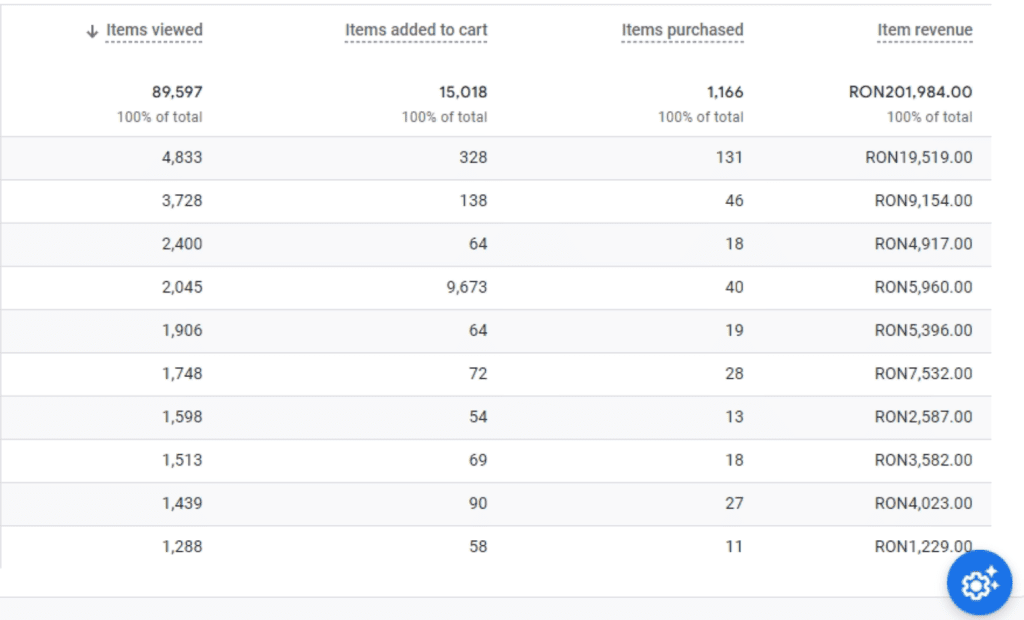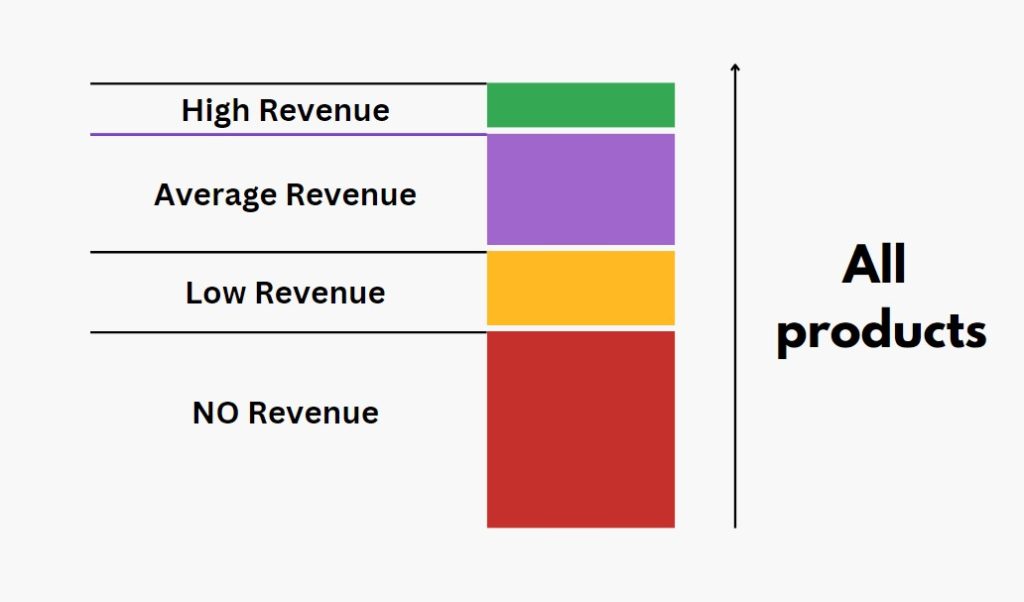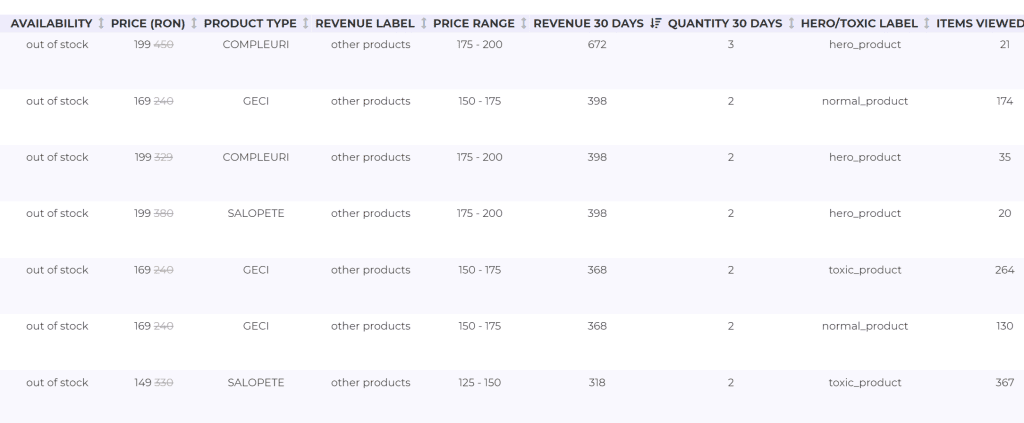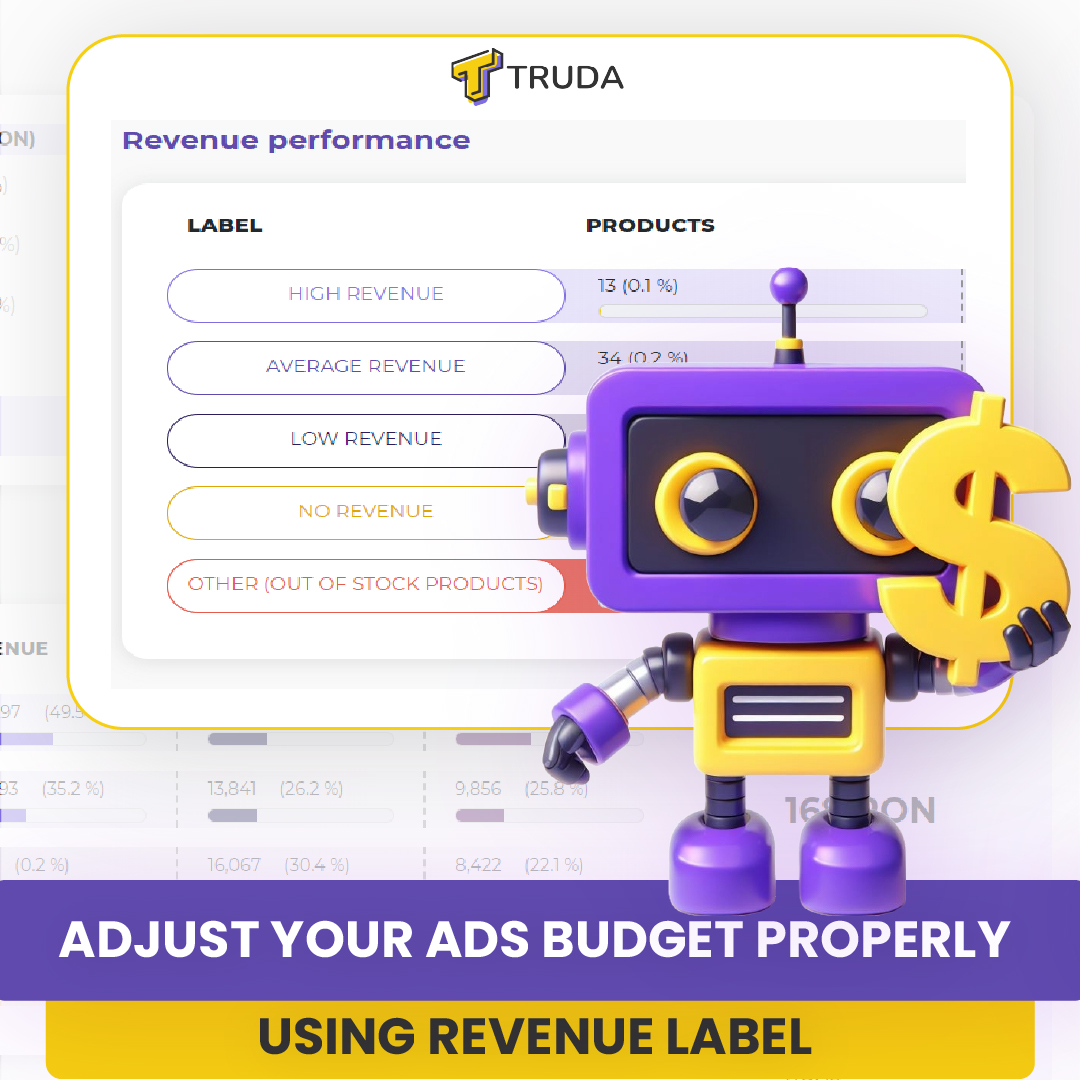Table of Contents
E-commerce Campaign Optimization with the Revenue Label
In the dynamic realm of online commerce, optimizing advertising campaigns is essential for driving sales and maximizing profitability. TRUDA offers a powerful solution through its Revenue Label feature, which categorizes products based on revenue data from the past 30 days. By utilizing this tool, businesses can gain valuable insights and tailor their marketing strategies accordingly to achieve optimal results.
Deciphering Revenue Metrics
Before delving into TRUDA’s functionality, it’s crucial to grasp the concept of revenue. Revenue represents the total income generated from product sales within a specific timeframe, serving as a key indicator of business performance and success in the e-commerce landscape.
Understanding Google Analytics 4 (GA4)
Google Analytics 4 represents a significant upgrade in web analytics, providing deeper insights into user behavior across different platforms and devices. Instead of focusing solely on pageviews, GA4 tracks user interactions as events, offering a more comprehensive understanding of user engagement and conversion paths.

TRUDA’s Revenue Label

TRUDA’s Revenue Label analyzes product data from the preceding 30 days, from the Google Analytics 4 property account, to categorize them into distinct segments: High Revenue, Average Revenue, Low Revenue, No Revenue, and Other. Each segment plays a crucial role in guiding advertising strategies and resource allocation for maximum impact.
TRUDA compares products referring to each category. Thus, TRUDA compares a laptop with another laptop and not a laptop with a bicycle. Product segmentation is done per product category and not globally. So, every product in each product type ( product category ) will be segmented relative to other products with the same product type.
Segmenting Products: Understanding the Purpose

- High Revenue: Products in this category have demonstrated significant income generation. Allocating a higher advertising budget to promote these items can amplify their success and drive further revenue growth.
- Average Revenue: Products with moderate income levels benefit from a balanced advertising budget to maintain their performance and potentially increase sales.
- Low Revenue: While these products generate some income, a focused advertising approach can help enhance their sales and profitability.
- No Revenue: This segment comprises products that have yet to generate income. While they may not contribute to immediate revenue, strategic marketing efforts can stimulate sales and create awareness among customers.
- Other: Products in this segment have generated revenue in the past but are currently out of stock. Monitoring these products offers insights into their previous performance and potential restocking opportunities.
Exploring the “Other” Segment

The “Other” segment is particularly intriguing as it includes products that have previously generated revenue but are currently out of stock. These products hold potential value as they have a track record of sales performance. Leveraging TRUDA, businesses can easily identify these products by applying filters such as “Revenue – Other” and “Revenue > 1” in the Products tab. You can even download the full list of Other products. Replenishing these items in stock can revitalize sales and capitalize on their past success.
Crafting Effective Campaign Architectures
By tailoring advertising campaigns based on TRUDA’s Revenue Label segmentation, businesses can optimize their marketing strategies to drive sales and revenue growth. Allocating budgets according to the performance of each product segment ensures efficient resource utilization and maximizes return on investment.
Here are examples of campaign strategies based on TRUDA’s Revenue Label:
- High Revenue Campaign: Allocate a significant portion of the budget to promote products with a history of high revenue generation.
- Average Revenue Campaign: Moderate the budget to sustain and potentially increase sales for products with average revenue.
- Low Revenue Campaign: Implement a balanced budget strategy to drive sales for products in this segment while optimizing return on investment.
- No Revenue Campaign: Allocate a smaller budget to stimulate sales and generate interest in products that have not yet generated revenue.
In conclusion, TRUDA’s Revenue Label empowers e-commerce businesses with valuable insights and tools to refine their advertising efforts. By leveraging revenue data from the past 30 days and segmenting products effectively, businesses can enhance their marketing strategies, capitalize on revenue opportunities, and achieve sustainable growth in the competitive online marketplace.
Ready to start your FREE 14 DAYS TRIAL? Contact us here




